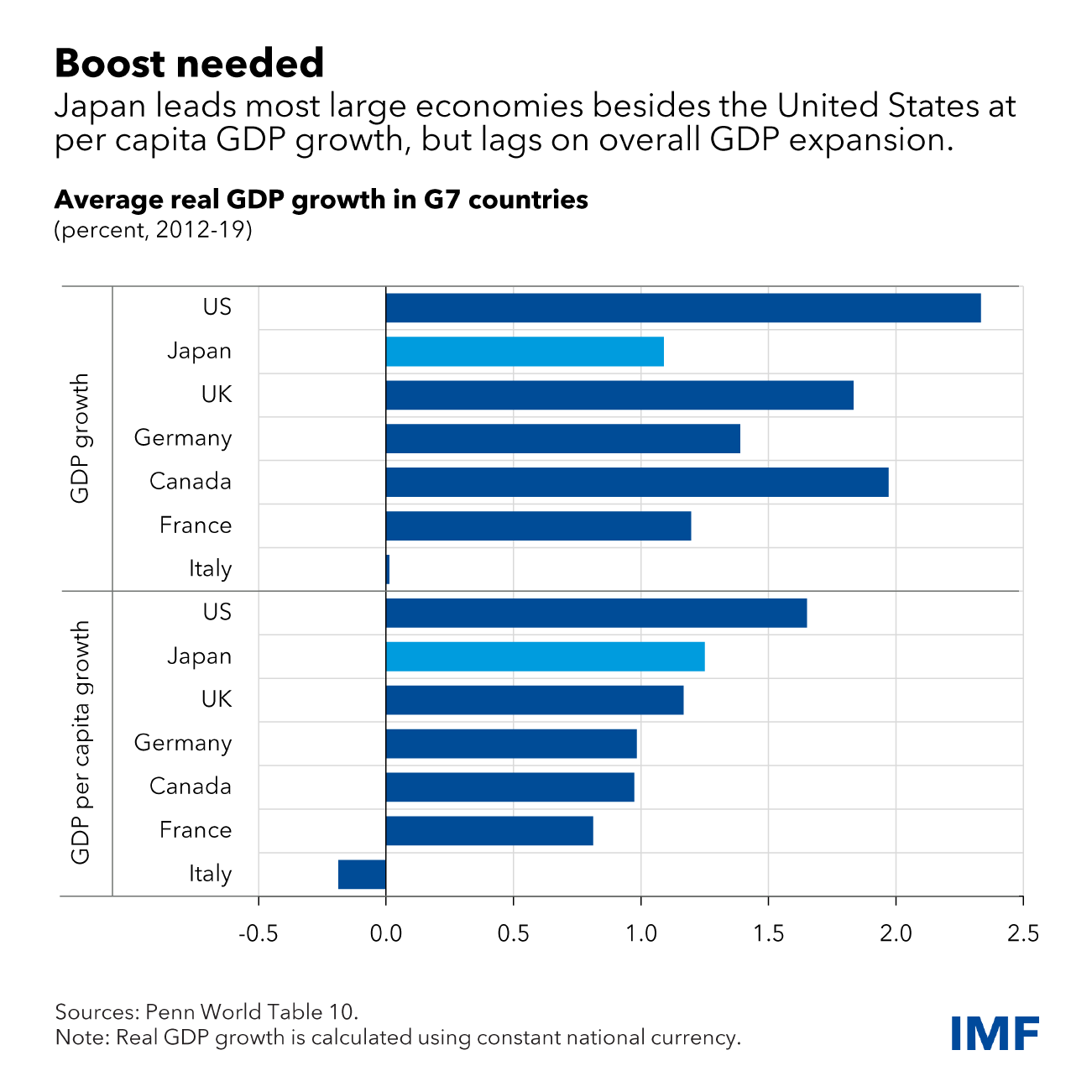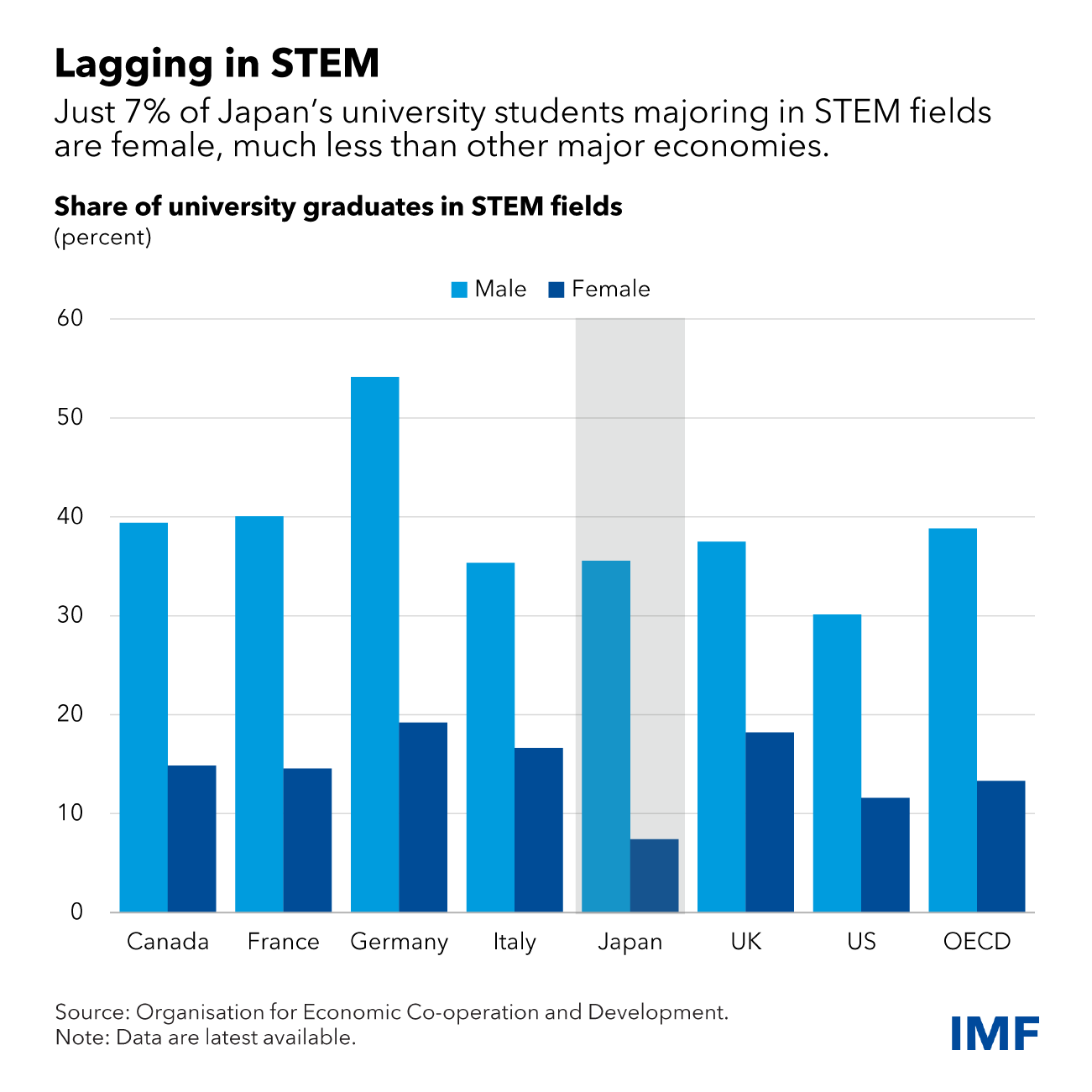By Rui Xu
Japan has one of the oldest populations globally, with its working-age population shrinking since the late 1990s. Despite that, Japan achieved impressive per capita gross domestic product growth, trailing only the United States, from 2012 to 2019 during “Abenomics”—the combination of monetary stimulus, fiscal flexibility, and structural reform advocated by Prime Minister Shinzō Abe.
A major contributor to per capita growth was the rising number of women entering the labor force. The female labor-force participation rate in Japan rose to 74 percent in 2022 from 63 percent in 2012. The new entrants, typically former stay-at-home mothers, were able to rejoin the labor force thanks to enhanced child-care support from the government and improved maternity-leave policies. These additional female workers helped mitigate the country’s chronic labor shortage, boosted family income, and fueled the growth engine.
However, the upward trend of women’s labor-force participation rate is now slowing and will likely plateau soon. Japan is in search of a new growth engine.
One oft-suggested solution is to bring in more talent from overseas. Compared with other Group of Seven countries, Japan has the lowest number of foreign workers, accounting for only 2.8 percent of the workforce. The government is implementing policies to attract more skilled workers from abroad but is unlikely to reach the scale that would offset the population decline under the current political environment.
To raise output without more workers, Japan must boost the labor productivity of its existing workforce. Our previous analysis of this situation promotes automation and digitalization, but both require STEM, or science, technology, engineering and math, talent that is in short supply in Japan.
Our recent research suggests that women in Japan could, again, be the growth engine. Rather than supplying cheap labor, more women should be encouraged to pursue careers in STEM fields. In Japan, only 7 percent of female university students major in STEM, compared with 36 percent of male students; that’s also less than comparable countries.
Such under-representation reflects various barriers in Japan that exist for women in STEM fields, rather than a lack of female talent. Eliminating those barriers will increase the supply of STEM talent, providing more Japanese workers who are instrumental for automation, digitalization, and innovation.
Using a model with STEM talent as the engine for economic growth, our research shows that eliminating the barriers faced by women in such jobs could accelerate productivity growth by 20 percent in Japan. The permanent productivity gains mainly reflect an increase in the number of STEM workers, who will innovate and push the technology frontier. With productivity growing at a faster pace, output and wages will also increase faster, leading to higher consumption and welfare.
Although beneficial to the economy as a whole, bridging the gender gap creates winners and losers. Female STEM workers would benefit the most, as, in theory, their income would converge with their male counterparts’, conditional on their talent. All non-STEM workers would also benefit from faster productivity growth.
On the other hand, male STEM workers could receive lower wages as the total supply of those workers increases. The least talented male STEM workers could even be replaced by female ones. The average welfare of all Japanese workers would rise by about 4 percent, based on our model calculation.
Women worldwide face both explicit and implicit pay gaps in STEM fields. Explicit pay gaps can be directly observed in earnings data, all other factors being equal. Such barriers are easier to identify and target with policies. At the same time, women also face implicit pay gaps due to disproportionate family burdens and workplace discrimination.
Women disproportionately step back from their careers when they have care-giving responsibilities, as Harvard University’s Claudia Goldin, this year’s Nobel laureate for economic sciences, documented in her 2021 book, Career and Family: Women’s Century-Long Journey toward Equity. That reality is responsible in large part for their diverging career paths and earnings gap.
The Japanese government is making progress in reducing the explicit pay gap. Recent “framework policies” that require companies to increase the transparency of data about their gender wage gaps are a welcome step. Such disclosure can help the government enforce its “equal pay for equal work” regulation and narrow the gender pay gap.
But more needs to be done to eliminate the implicit pay gap in Japan. Work-style reforms and a more flexible labor market are both essential. Labor-market changes in hiring and promotion based on merit, instead of seniority, would improve the returns on STEM education for women.
While eliminating barriers for women in STEM may take years, if not decades, to implement, Japan’s policymakers can explore the use of quotas and other policies to correct for gender biases, including in STEM fields.
Over time, more talented women will be encouraged to join STEM fields once they can observe other women with successful careers in those occupations. When this happens, women with STEM training will innovate and contribute more to Japan’s economic prosperity. – IMF BLOG
- Writer prepared this report while serving as an economist in the Asia-Pacific Department’s Japan team and is now an economist in the Monetary and Capital Markets Department.






